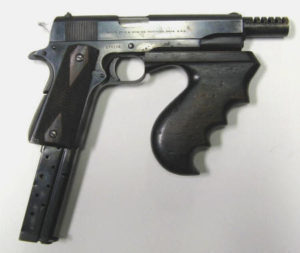This is called slide surge. It won't cause doubling or full auto, as the half cock notch will catch the hammer.
The bullseye reload won't prevent a worn sear from doubling. It is probably a bad habit for pistols other than ultra competitive bullseye shooters.
There is a series of checks for proper sear engagement. A competent pistolsmith will go through them after his work to make sure the pistol works correctly before returning it to his client. Full auto due to worn sear won't happen total out of blue. It is usually preceded by doubles, whose frequency increases if the shooter ignore the warning and keeps firing.
-TL
The bullseye reload won't prevent a worn sear from doubling. It is probably a bad habit for pistols other than ultra competitive bullseye shooters.
There is a series of checks for proper sear engagement. A competent pistolsmith will go through them after his work to make sure the pistol works correctly before returning it to his client. Full auto due to worn sear won't happen total out of blue. It is usually preceded by doubles, whose frequency increases if the shooter ignore the warning and keeps firing.
-TL

